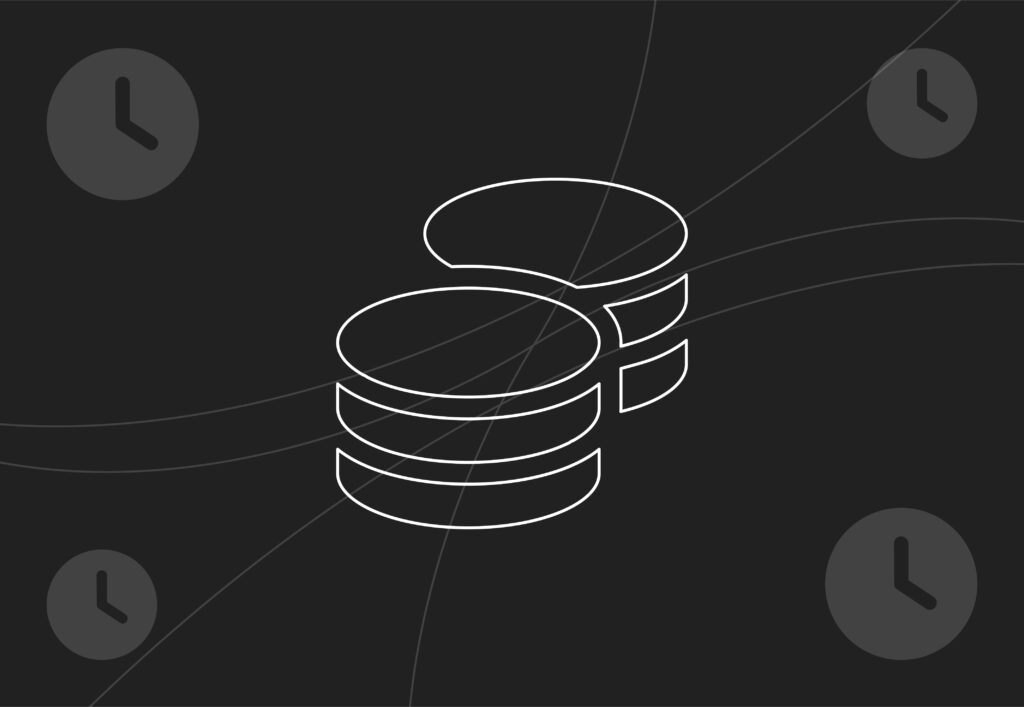
How CRM data transforms your digital marketing strategy

In today’s competitive landscape, understanding your customer is no longer optional… it’s essential. And that’s where Customer Relationship Management (CRM) systems truly shine. CRMs do more than store contact details; they offer rich insights that empower businesses to build stronger relationships, create more meaningful experiences, and drive better results.
Here are six powerful ways CRM data can completely transform your marketing approach, with some stats to prove it.
Is CRM the backbone of your digital marketing strategy?
1. Centralised customer data = smarter decisions
A CRM acts as a single source of truth for your customer data, everything from email interactions and website visits to purchase history. This complete picture helps you understand your audience more deeply and make data-backed marketing decisions that resonate.
- Businesses using CRM systems see sales increase by up to 29% and sales productivity grow by 34%. (Salesforce)
Every email you send gives you real feedback, whether someone opened it, clicked a link, or took the next step. These small actions tell you a lot about what resonates and what doesn’t, helping you shape more effective campaigns over time.
With this kind of insight, you can craft personalised, cross-channel campaigns that are timely, relevant, and effective.
Owning your customer data means:
- Accurate, real-time insights- no stale third-party lists.
- Smarter targeting, personalisation, and lower acquisition costs.
- A scalable advantage that competitors who rely on third-party data can’t easily replicate.
Companies using first‑party data for personalisation see an average 8.7% higher return on ad spend (ROAS) than those relying solely on third-party sources.
2. Smarter segmentation and targeting
One-size-fits-all marketing is a thing of the past. CRM data allows you to segment your audience by demographics, behaviour, interests, and purchase history. That means you can speak directly to different groups based on what matters to them.
- Segmented campaigns can deliver 760% more revenue than non-segmented ones.
Whether it’s re-engaging inactive users or rewarding loyal customers, better targeting means better results and lower ad waste.
Your CRM is full of rich, first-party data: who your customers are, what they’ve done, what they’ve bought, and what they care about. By connecting that data to your website & paid media channels, you can tailor content, offers, and messaging in real-time.
Connect past behaviour from your CRM (products viewed, carts abandoned, purchases made) to display personalised product suggestions or “You may also like” sections.
For example: Someone who bought a coffee machine might see compatible accessories or coffee subscriptions.
Personalise your homepage or landing page experience, change key elements like headlines, images, and CTAs based on CRM data—such as industry (for B2B), location, or user interests.
Greet returning visitors by name or status. If a visitor is logged in or recognised via a cookie, you can greet them by name or status (“Welcome back, Sarah! Your loyalty status: Gold”) using CRM attributes.
- Why it works: Personal touches create a sense of recognition and increase retention.
Paid media becomes far more efficient—and effective—when it’s powered by your own customer data. By leveraging CRM insights, you’re not just broadcasting ads; you’re delivering personalised, high-converting messages to the right people at the right time.
91% of consumers are more likely to shop with brands that provide relevant offers and recommendations.
Advertisers using first-party data (like CRM audiences) see a 2.9X improvement in ad efficiency compared to third-party targeting.
Retargeting users with CRM data can increase conversion rates by up to 150%.
CRM-synced campaigns can reduce wasted ad spend by 20–30%.
3. Personalisation that connects
With access to real-time data, your CRM helps you deliver content that feels personal—like it was created just for each customer. From emails and product recommendations to tailored website content, it’s all shaped by past behaviours and preferences.
- 80% of consumers are more likely to buy from brands that offer personalised experiences.
This type of messaging drives engagement, encourages repeat purchases, and helps build lasting brand loyalty.
Personalisation works because it treats people like individuals, not inboxes or ad impressions. It’s not just a trend, it’s an expectation.
At its core, loyalty isn’t built on points or perks alone, it’s built on trust, relevance, and connection. Personalisation plays a crucial role in creating experiences that feel human, thoughtful, and worth coming back to.
Trust grows when people consistently receive relevant and respectful experiences. Personalised interactions show that your brand listens and delivers value, not just sales messages.
- 90% of leading marketers say personalisation significantly contributes to business profitability and trust.
- 60% of consumers say they’ll become repeat buyers after a personalised shopping experience.
As you personalise more touchpoints (email, website, ads, support), the customer receives consistently relevant experiences. This encourages them to engage more, share more data, and become even more loyal over time.
4. Time-saving marketing automation
In today’s fast-paced digital world, customers expect seamless, personalised experiences across every channel, whether they’re browsing your website, scrolling social media, or opening an email. Combining marketing automation with an omnichannel strategy unlocks the ability to deliver exactly that, at scale.
CRM-powered automation allows you to create smart workflows based on customer actions. You can automatically send a welcome email to new subscribers, a reminder after an event registration, or a birthday message with a special offer.
- Automated emails generate 320% more revenue than non-automated emails.
Automation not only saves time and resources, it ensures you stay consistent and timely with every customer interaction.
Marketing automation ensures the right message reaches the right person at the right time across every channel. So whether a customer opens an email, clicks a social ad, or visits your website, their experience feels connected and cohesive. Someone who downloads a guide via email can be automatically followed up with a retargeting ad, then a personalised SMS reminder.
Automated workflows nurture leads through the funnel with relevant content on multiple channels, while scoring and segmenting prospects for sales follow-up. Achiving Higher conversion rates, shorter sales cycles, and better alignment between marketing and sales teams.
- Businesses with omnichannel customer engagement strategies retain 89% of their customers, compared to 33% for companies with weak omnichannel strategies.
5. Better lead management and nurturing
Paid media is great at generating leads, but without the right follow-up and context, those leads often go cold. That’s where your CRM steps in.
When integrated properly, your CRM doesn’t just help you capture leads from your paid channels—it helps you qualify, segment, nurture, and convert them more efficiently.
Smarter lead capture and routing
When leads come in from paid sources (Google Ads, Meta, LinkedIn, etc.), your CRM can automatically:
- Capture all lead details (name, email, source, campaign)
- Route them to the right sales team or nurture track
- Trigger follow-up emails or workflows instantly
Your CRM tracks every interaction—from ad click to website visit to email engagement, and can assign scores based on how ready a lead is to buy.
Example: A lead from a Meta campaign who downloads a brochure and revisits your pricing page can be flagged as “hot” and prioritised for sales outreach.
Not every lead is ready to convert right away. Your CRM can nurture paid media leads with personalised email sequences, SMS, or even retargeting ads until they’re sales-ready.
CRM data allows you to sync high-quality lead segments back into ad platforms (like Meta or Google), so you can:
- Retarget based on funnel stage or behaviour
- Exclude converted leads to avoid wasting ad spend
- Create lookalike audiences of top-converting leads
Companies that connect their CRM and paid channels see up to 25% higher campaign ROI.
6. A stronger customer experience (across every channel)
At the end of the day, customers want more than just a product; they want to feel seen, heard, and valued at every step of their journey. A CRM helps you deliver that by giving your teams a complete, real-time view of every customer interaction, no matter which channel they came from.
With CRM at the core of your marketing, sales, and support efforts, you can:
- Personalise every touchpoint, from email and SMS to social ads and web content, based on a customer’s past behaviour, preferences, and purchase history.
- Respond faster and smarter- your support team has access to full customer histories, so they can offer solutions with empathy and context.
- Create seamless transitions across channels- whether a customer moves from an Instagram ad to your website, or from a chatbot to a human agent, the experience feels unified and consistent.
- 86% of buyers are willing to pay more for a better customer experience.
Final thoughts
As marketing becomes more complex and customer expectations continue to rise, the brands that succeed won’t be the ones shouting the loudest, but the ones that listen the closest. CRM isn’t just a database- it’s the foundation for truly intelligent, connected, and customer-centric marketing.
From paid media to email, website personalisation to lead nurturing, CRM fuels every layer of your digital marketing engine. It empowers you to move from siloed campaigns to integrated experiences that convert, retain, and delight customers
By harnessing CRM data, you’re not only improving targeting, automation, and ROI, you’re creating seamless, personalised experiences that build trust, drive loyalty, and make every interaction feel meaningful. From paid media to email, from first click to long-term retention, CRM empowers you to meet your customers where they are, with the right message, at the right time, on the right channel.
If you want to future-proof your marketing strategy and create experiences people remember, your CRM is the best place to start.


